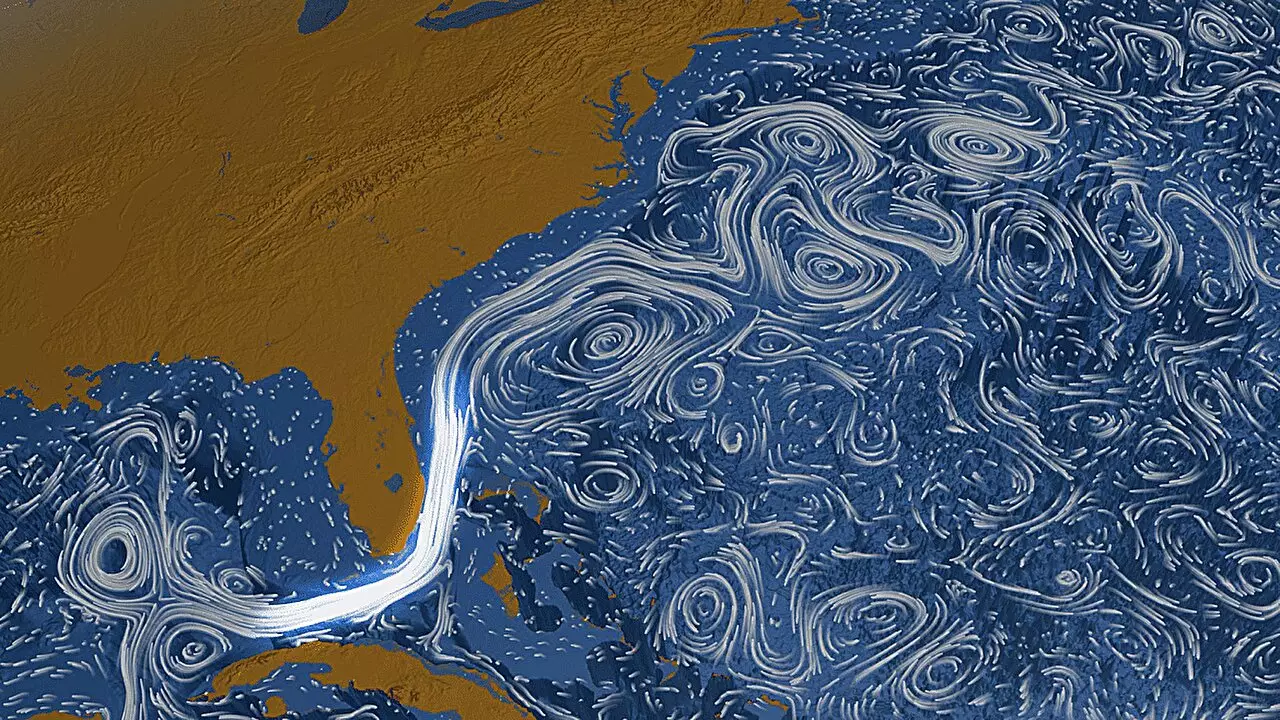As the global climate undergoes significant changes, the dynamics of ocean circulation are increasingly at the forefront of scientific research. Central to this investigation is the Atlantic Meridional Overturning Circulation (AMOC), a vital component of the Earth’s climate system. The AMOC is responsible for transporting warm and cold water masses within the Atlantic Ocean. Its influence extends beyond mere temperature regulation; it fundamentally affects global weather patterns, sea levels, and ecological systems. Recent discussions have spotlighted a potential weakening of this circulation, which could have profound implications for climate stability.
Yet, despite predictions from leading climate models that suggest a possible decline in the AMOC’s strength—up to 45% reduction by the century’s end—empirical observations tell a different story. A recent study, conducted by researchers from various institutes, including NOAA’s Atlantic Oceanographic and Meteorological Laboratory and the University of Miami, indicates that one of the key currents within the AMOC, the Florida Current, has shown remarkable stability over the past four decades.
The Florida Current is a swift ocean current that originates in the Gulf of Mexico and flows northward along Florida’s coast, eventually merging with the Gulf Stream in the Atlantic. This current plays a crucial role in the AMOC by facilitating heat and salinity transportation. Its influence is felt in various societal contexts, affecting coastal sea levels, weather phenomena, and climatic patterns in the subtropical North Atlantic.
Understanding the Florida Current’s behavior is essential to gauging the health of the AMOC. The long-term monitoring of this current has been enabled through innovative techniques, including a unique system employing a submarine cable that measures electric voltages induced by the movement of salt ions in the water.
Since 1982, NOAA has implemented a monitoring program called the Western Boundary Time Series (WBTS), which leverages a 120-km submarine cable paired with regular hydrographic surveys. This continuous observational effort has produced an expansive dataset—the longest of its kind for this boundary current. The collaborative project has also engaged various international partners, reflecting a collective scientific commitment to understanding the complexities of ocean currents.
The recent study scrutinized voltage measurements from the cable, which offered insight into the volume transport of the Florida Current. Scientists initially reported a declining trend in the current’s strength, prompting concerns over the AMOC’s stability. However, new assessments revealed that the original data required adjustments for gradual fluctuations in the Earth’s magnetic field—an oversight that significantly altered the interpretation of the current’s behavior over the years. The corrected analysis indicates that the Florida Current has maintained a stable transport capacity, contrasting sharply with the earlier narrative of a weakening current.
The findings from this study bring new clarity to the ongoing debate about the AMOC’s stability. The revised data highlight a substantial reduction in the perceived decline of the Florida Current and subsequently diminish the notion of a significantly weakening AMOC over the past two decades. This presents an intriguing conundrum for climate science: if the AMOC is indeed slowing as predicted by models, this slowdown has yet to manifest in the stability of the Florida Current, suggesting potential gaps in our current understanding or observational limitations.
As lead researcher Denis Volkov noted, although the AMOC observing system has two decades of data, the timeframe remains too short to draw overwhelmingly strong conclusions. It is plausible that some changes in the AMOC are occurring independently of observable shifts in the Florida Current’s behavior. Future studies aimed at understanding this relationship will rely on sustained observations and advanced modeling techniques to unravel these complex interactions.
The repercussions of understanding the AMOC’s dynamics extend far beyond academic curiosity. The stability of the Florida Current affects ecological health, fisheries, and coastal communities. Thus, maintaining rigorous observational programs like the WBTS is crucial for generating reliable data that will inform climate adaptation and mitigation strategies.
While recent findings suggest that the Florida Current has not weakened in the last 40 years, ongoing research and monitoring are essential to keep pace with the evolving narrative of our changing climate. It is only through sustained collaboration, technological innovation, and data sharing that scientists can piece together the intricate puzzle of ocean circulation and its broader implications for global climate stability.


Leave a Reply